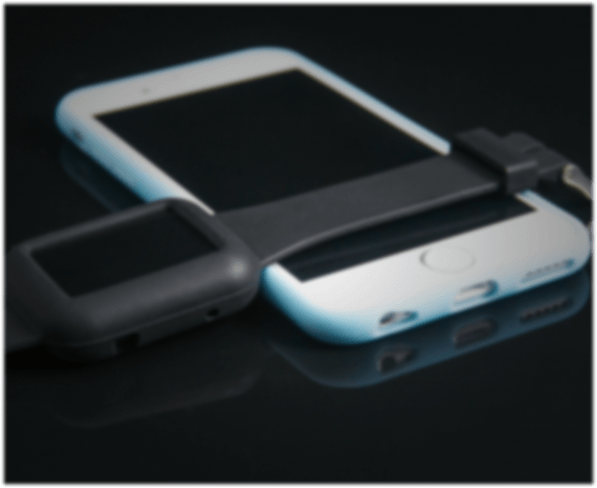inovações
tech </>


Quem
SOMOS
Na Seven Link, somos especialistas em criar soluções tecnológicas personalizadas que impulsionam o sucesso de startups e empresas. Com uma equipe dedicada e experiente, oferecemos serviços que vão desde automação de processos até análise de dados, sempre focados nas necessidades específicas de nossos clientes.
O que
FALAR

Automatize processos
ELIMINE ETAPAS E PROCESSOS MONÓTONOS COM SOLUÇÕES PERSONALIZADAS ATRAVÉS DE SISTEMAS.

Softwares personalizados
TRANSFORME SUA IDEIA E SEU MODELO EM TECNOLOGIA DESENVOLVIDA SOB MEDIDA PARA O SEU NEGÓCIO.

Soluções com tecnologia
PARA TODOS OS DESAFIOS DO SEU NEGÓCIO, NÓS TEMOS UMA SOLUÇÃO PARA TE APRESENTAR COM TECNOLOGIA.
8 ANOS ATUANDO EM SOLUÇÕES DE TECNOLOGIA
8 anos
ATUANDO EM SOLUÇÕES DE TECNOLOGIA
Mundo
DESDE O INÍCIO ATUANDO COM EMPRESAS GLOBAIS
+2M
MAIS DE 2 MILHõES DE APORTE EM PROJETOS DESENVOLVIDOS PELO NOSSO TIME
Until recently, the prevailing view assumed <em>lorem ipsum</em> was born as a nonsense text. “It’s not Latin, though it looks like it, and it actually says nothing,” <em>Before & After</em> magazine answered a curious reader, “Its ‘words’ loosely approximate the frequency with which letters occur in English, which is why at a glance it looks pretty real.”
As Cicero would put it, “Um, not so fast.”
The placeholder text, beginning with the line <em>“Lorem ipsum dolor sit amet, consectetur adipiscing elit”</em>, looks like Latin because in its youth, centuries ago, it was Latin.
Richard McClintock, a Latin scholar from Hampden-Sydney College, is credited with discovering the source behind the ubiquitous filler text. In seeing a sample of <em>lorem ipsum</em>, his interest was piqued by <em>consectetur</em>—a genuine, albeit rare, Latin word. Consulting a Latin dictionary led McClintock to a passage from <em>De Finibus Bonorum et Malorum</em> (“On the Extremes of Good and Evil”), a first-century B.C. text from the Roman philosopher Cicero.
Until recently, the prevailing view assumed <em>lorem ipsum</em> was born as a nonsense text. “It’s not Latin, though it looks like it, and it actually says nothing,” <em>Before & After</em> magazine answered a curious reader, “Its ‘words’ loosely approximate the frequency with which letters occur in English, which is why at a glance it looks pretty real.”
As Cicero would put it, “Um, not so fast.”
The placeholder text, beginning with the line <em>“Lorem ipsum dolor sit amet, consectetur adipiscing elit”</em>, looks like Latin because in its youth, centuries ago, it was Latin.
Richard McClintock, a Latin scholar from Hampden-Sydney College, is credited with discovering the source behind the ubiquitous filler text. In seeing a sample of <em>lorem ipsum</em>, his interest was piqued by <em>consectetur</em>—a genuine, albeit rare, Latin word. Consulting a Latin dictionary led McClintock to a passage from <em>De Finibus Bonorum et Malorum</em> (“On the Extremes of Good and Evil”), a first-century B.C. text from the Roman philosopher Cicero.
Until recently, the prevailing view assumed <em>lorem ipsum</em> was born as a nonsense text. “It’s not Latin, though it looks like it, and it actually says nothing,” <em>Before & After</em> magazine answered a curious reader, “Its ‘words’ loosely approximate the frequency with which letters occur in English, which is why at a glance it looks pretty real.”
As Cicero would put it, “Um, not so fast.”
The placeholder text, beginning with the line <em>“Lorem ipsum dolor sit amet, consectetur adipiscing elit”</em>, looks like Latin because in its youth, centuries ago, it was Latin.
Richard McClintock, a Latin scholar from Hampden-Sydney College, is credited with discovering the source behind the ubiquitous filler text. In seeing a sample of <em>lorem ipsum</em>, his interest was piqued by <em>consectetur</em>—a genuine, albeit rare, Latin word. Consulting a Latin dictionary led McClintock to a passage from <em>De Finibus Bonorum et Malorum</em> (“On the Extremes of Good and Evil”), a first-century B.C. text from the Roman philosopher Cicero.
Until recently, the prevailing view assumed <em>lorem ipsum</em> was born as a nonsense text. “It’s not Latin, though it looks like it, and it actually says nothing,” <em>Before & After</em> magazine answered a curious reader, “Its ‘words’ loosely approximate the frequency with which letters occur in English, which is why at a glance it looks pretty real.”
As Cicero would put it, “Um, not so fast.”
The placeholder text, beginning with the line <em>“Lorem ipsum dolor sit amet, consectetur adipiscing elit”</em>, looks like Latin because in its youth, centuries ago, it was Latin.
Richard McClintock, a Latin scholar from Hampden-Sydney College, is credited with discovering the source behind the ubiquitous filler text. In seeing a sample of <em>lorem ipsum</em>, his interest was piqued by <em>consectetur</em>—a genuine, albeit rare, Latin word. Consulting a Latin dictionary led McClintock to a passage from <em>De Finibus Bonorum et Malorum</em> (“On the Extremes of Good and Evil”), a first-century B.C. text from the Roman philosopher Cicero.
QUEM
CONFIA












NOSSOS
CASES

AI Integrated App
Technology / AI

Product Sync Saas
Technology / App
Customer
Reviews

“Lorem ipsum dolor sit amet, consectetur adipiscing elit. Suspendisse varius enim in eros elementum tristique. Duis cursus, mi quis viverra ornare.”

Melinda M
HR Manager, Melinda Tech

“Lorem ipsum dolor sit amet, consectetur adipiscing elit. Suspendisse varius enim in eros elementum tristique. Duis cursus, mi quis viverra ornare.”

Moxley Kole
HR Manager, Melinda Tech

“Lorem ipsum dolor sit amet, consectetur adipiscing elit. Suspendisse varius enim in eros elementum tristique. Duis cursus, mi quis viverra ornare.”

Alexa Mol
HR Manager, Melinda Tech

“Lorem ipsum dolor sit amet, consectetur adipiscing elit. Suspendisse varius enim in eros elementum tristique. Duis cursus, mi quis viverra ornare.”

Henry John
HR Manager, Melinda Tech




